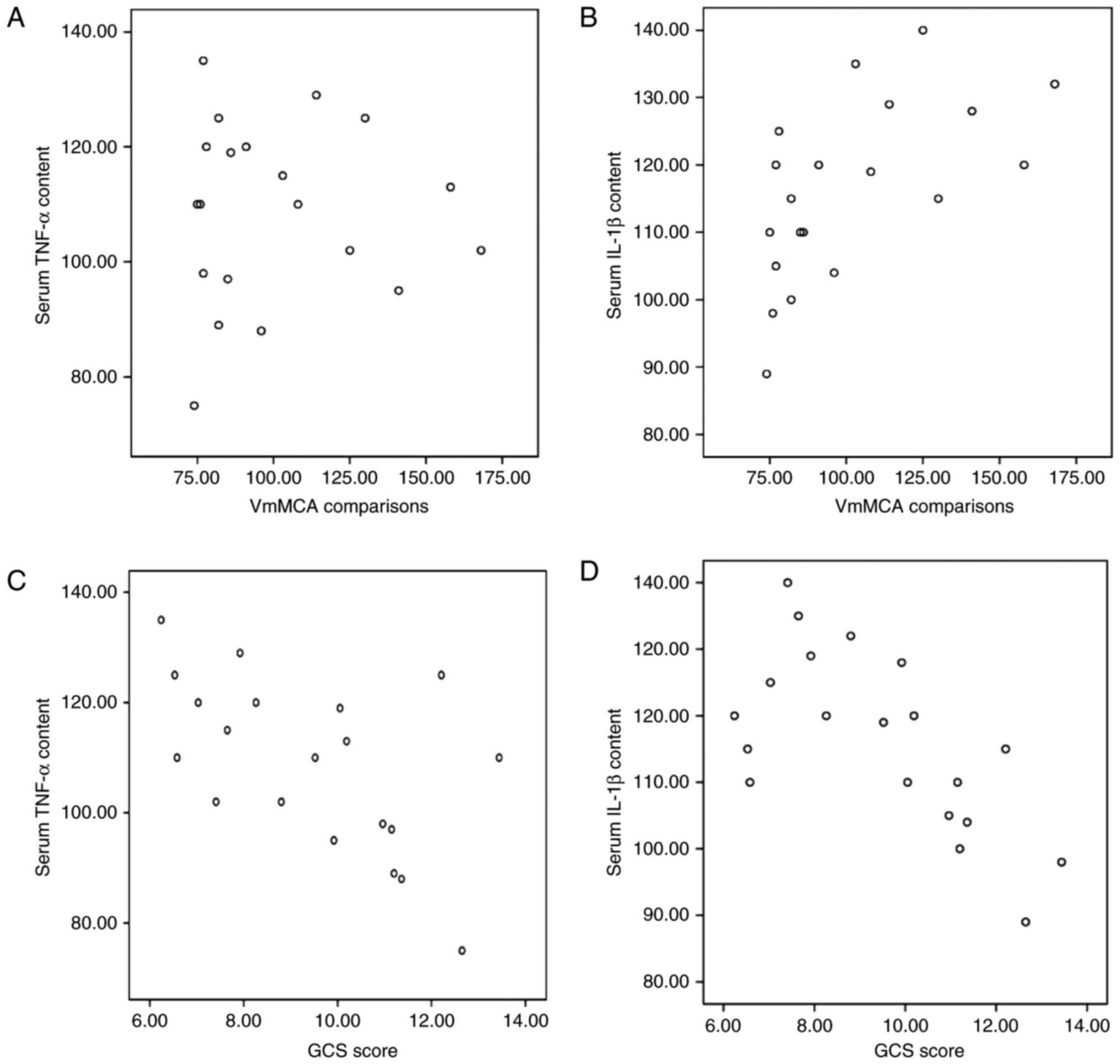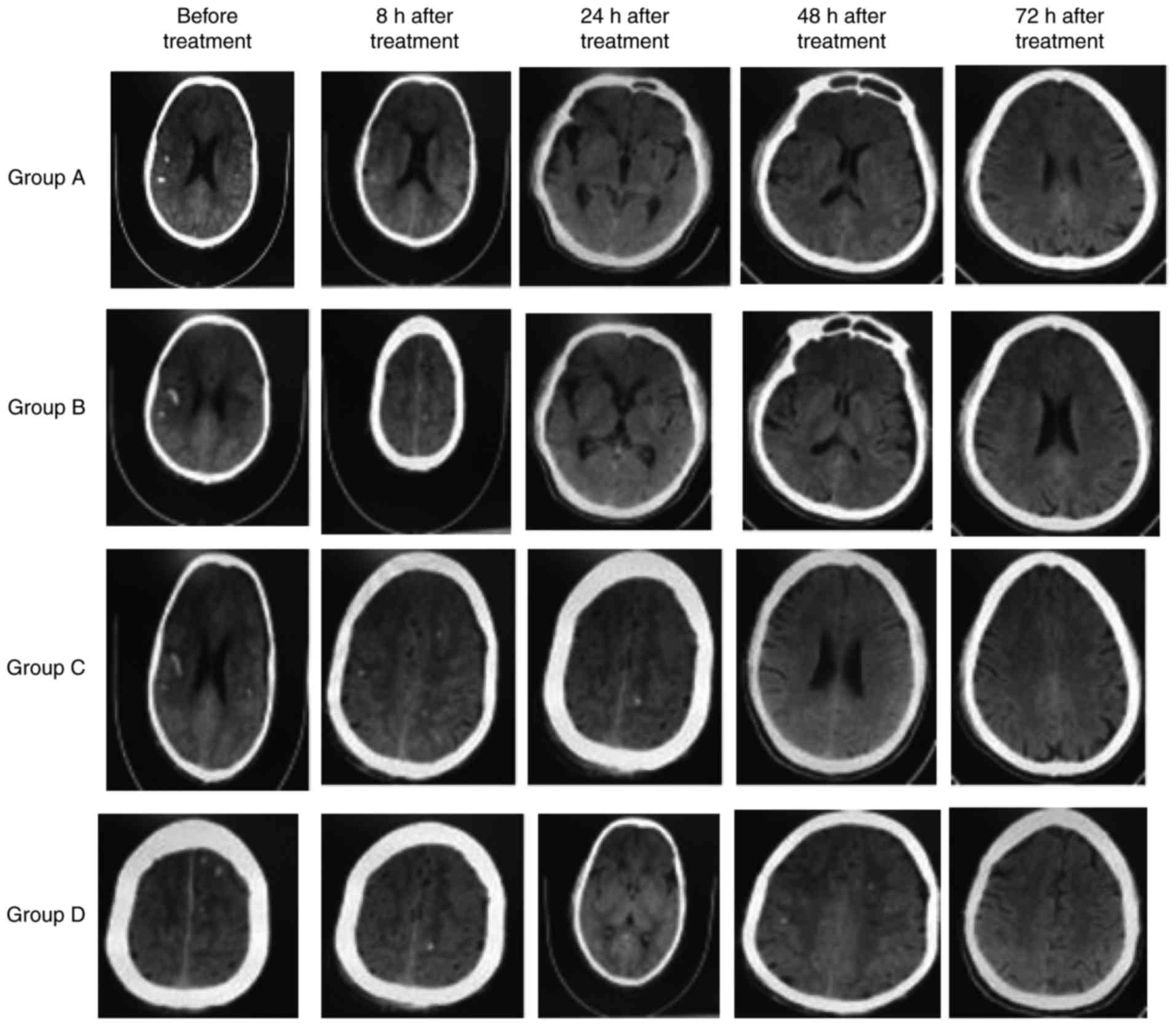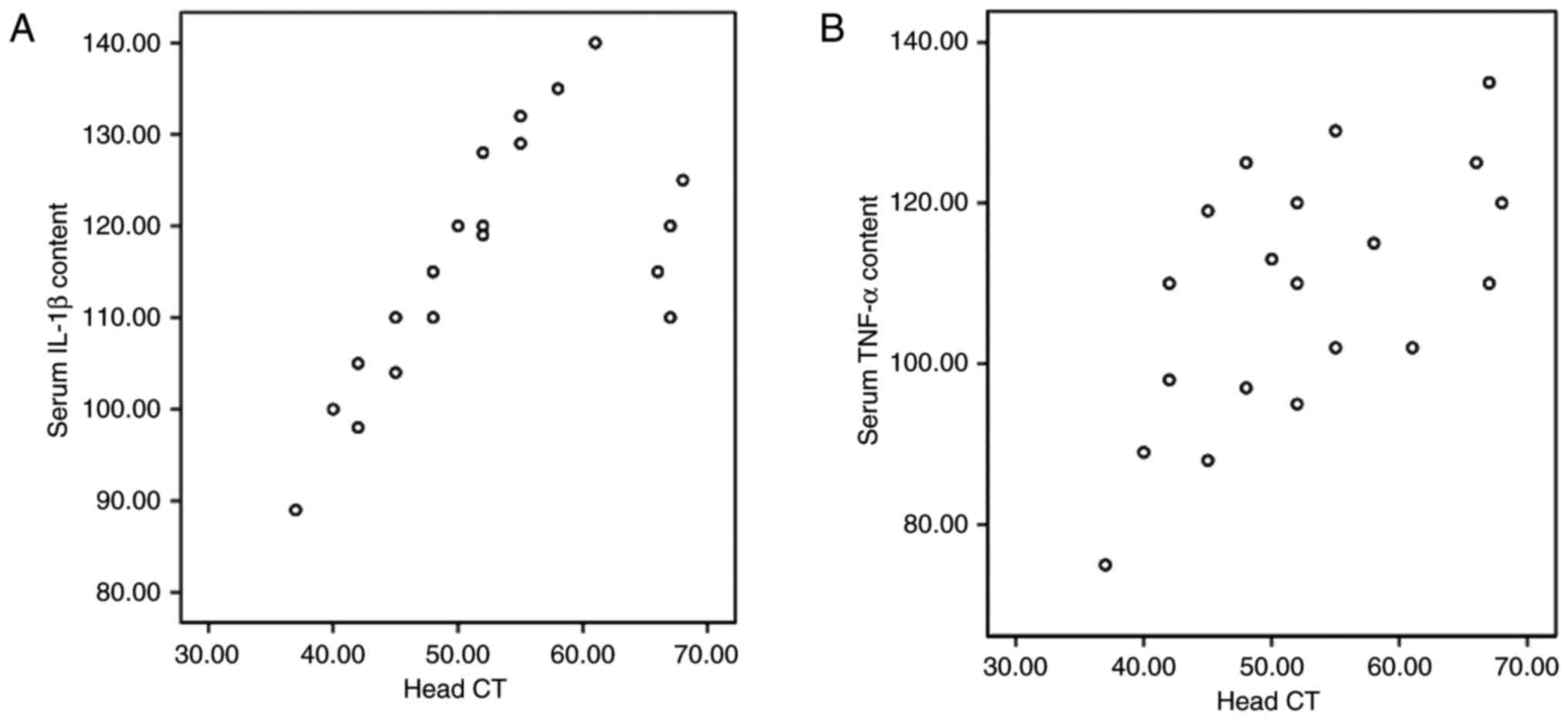|
1
|
Li Yu and Du Yanli: High field magnetic
resonance diffusion tensor imaging in the evaluation of severe
traumatic brain injury. Zhonghua Lin Chuang Yi Shi Za Zhi (Dian zi
ban). 9:4103–4104. 2013.(In Chinese).
|
|
2
|
Graham DI, McIntosh TK, Maxwell WL and
Nicoll JA: Recent advances in neurotrauma. J Neuropathol Exp
Neurol. 59:641–651. 2000. View Article : Google Scholar : PubMed/NCBI
|
|
3
|
Vink R, Nimmo AJ and Cemak I: An overview
of new and novel pharmaco theraies for use in traumatic brain
injury. Clin Exp Pharmacol Physiol. 28:919–921. 2001. View Article : Google Scholar : PubMed/NCBI
|
|
4
|
He XS: Recognizing the study on
inflammatory responses post traumatic brain injury. J Fourth
Military Med University. 25:7692004.
|
|
5
|
Teasdale G and Jennett B: Assessment of
coma and impaired consciousness. A practical seale. Lancet.
2:81–84. 1974. View Article : Google Scholar : PubMed/NCBI
|
|
6
|
Hardy P, Johnston KM, De Beaumont L,
Montgomery DL, Lecomte JM, Soucy JP, Bourbonnais D and Lassonde M:
Pilot case study of the therapeutic potential of hyperbaricoxygen
therapy on chronic brain injury. J Neurol Sci. 253:94–105. 2007.
View Article : Google Scholar : PubMed/NCBI
|
|
7
|
Yang HW and Liao SC: The clinical analysis
of earlyhyperbaric oxygen treatment for postoperative acute brain
injury. J Yanan University (Medical Sciences). 9:25–28. 2011.(In
Chinese).
|
|
8
|
Yu SN, He GS and Cai SZ: The clinical
analysis of earlyhyperbaric oxygen treatment for postoperative
severe brain injury. Chin J Clin Neurosurgery. 18:306–308. 2013.(In
Chinese).
|
|
9
|
Sukoff MH: Effect of hyperbaric
oxygenation. J Neurosurg. 95:544–546. 2001.PubMed/NCBI
|
|
10
|
Xiong Y, Peterson PL and Lee CP:
Alterations in cerebral energy metabolism induced by traumatic
brain injury. Neurol Res. 23:129–138. 2001. View Article : Google Scholar : PubMed/NCBI
|
|
11
|
Suehiro E, Fujisawa H, Akimura T, Ishihara
H, Kajiwara K, Kato S, Fujii M, Yamashita S, Maekawa T and Suzuki
M: Increased matrix metalloproteinase-9 in blood in association
with activation of interleukin-6 after traumatic brain injury:
Influence of hypothermic therapy. J Neumtrauma. 21:1706–1711. 2004.
View Article : Google Scholar
|
|
12
|
Merrill JE and Benveniste EN: Cytokines in
inflammatory brain lesion: Helpful and harmful. Trends Neurosci.
19:331–338. 1996. View Article : Google Scholar : PubMed/NCBI
|
|
13
|
Feng B, Tan ZM and Wang HS: The clinical
importance of tumor necrosis factor in acute brain injury. Chin J
Critical Care Med. 17:14–16. 1997.(In Chinese).
|
|
14
|
Fassbender K, Rossol S, Kammer T,
Daffertshofer M, Wirth S, Dollman M and Hennerici M:
Proinflammotory cytokines in serum of patients with acute cerebral
ischemia: Kinetics of secretion and relation to extent of brain
damage and outcome of disease. J Neurol Sci. 122:135–139. 1994.
View Article : Google Scholar : PubMed/NCBI
|
|
15
|
Zhu T, Yao Z and Yuan HN: The changes of
TNF-α, IL-1β and IL-6 levels in postoperative rats. Chin J Trauma.
14:367–369. 1998.(In Chinese).
|
|
16
|
Si QJ: The function of Tumor necrosis
factor in myocardial ischemia/reperfusion injury. J Chin PLA
Postgraduate Med School. 15:220–222. 1994.(In Chinese).
|
|
17
|
Li H, Yang X, Shi W, Ma Z, Feng G, Wang Q,
Shen L and Xie C: Protective effects of nimodipine on
cerebrovascular function in chronic alcoholic encephalopathy. Int J
Mol Med. 33:201–208. 2014. View Article : Google Scholar : PubMed/NCBI
|
|
18
|
Yang Y, Zhang Y, Wang Z, Wang S, Gao M, Xu
R, Liang C and Zhang H: Attenuation of acute phase injury in rat
intraxranial hemorrhage by cerebrolysin that inhibits brain edema
and inflammatory response. Neurochem Res. 41:748–757. 2016.
View Article : Google Scholar : PubMed/NCBI
|
|
19
|
Kim H, Edwards NJ, Choi HA, Chang TR, Jo
KW and Lee K: Treatment strategies to attenuate perihematomal edema
in patients with intracerebral hemeorrhage. World Neurosurg.
94:32–41. 2016. View Article : Google Scholar : PubMed/NCBI
|
|
20
|
Rothwell N: Interleukin-1 and neuronal
injury: Mechanisms, modification, and therapeutic potential. Brain
Behav Immun. 17:152–157. 2003. View Article : Google Scholar : PubMed/NCBI
|
|
21
|
Patel HC, Boutin H and Allan SM:
Interleukin-1 in the brain: mechanisms of action in acute
neurodegeneration. Ann NY Acad Sci. 992:39–47. 2003. View Article : Google Scholar : PubMed/NCBI
|
|
22
|
Schoami E, Gallily R, Mechonlam R, Bass R
and Ben-Hur T: Cytokine production the brain following closed head
injury: Dexanabinol (HU-211)isnovel TNF-alpha inhibitor and
effective neuroprotectant. J Neuroimmuno1. 72:169–177. 1997.
View Article : Google Scholar
|
|
23
|
Fassbender K, RossoI S, Kammer T,
Daffertshofer M, Wirth S, Dollman M and Hennerici M:
Proinflammatory cytokines in serum of patients with acute cerebral
ischemia: Kinetics of secretion and relation to extent of brain
damage and outcome of disease. J Neurol Sci. 122:135–139. 1994.
View Article : Google Scholar : PubMed/NCBI
|
|
24
|
Coussens LM and Werb Z: Inflammation and
cancer. Nature. 420:860–867. 2002. View Article : Google Scholar : PubMed/NCBI
|
|
25
|
Hardy P, Johnston KM, De Beaumont L,
Montgomery DL, Lecomte JM, Soucy JP, Bourbonnais D and Lassonde M:
Pilot case study of the therapeutic potential of hyperbaric oxygen
therapy on chronic brain injury. J Neurol Sci. 253:94–105. 2007.
View Article : Google Scholar : PubMed/NCBI
|
|
26
|
Philippon B and Munsch RC: Variations of
the cerebral blood flow after hyperbaric oxygenation in traumatic
coma. Neurochirurgie. 21:483–492. 1975.(In French). PubMed/NCBI
|
|
27
|
Isakov IuV, Anan'ev GV, Aide KhB and
Korol'kov IuI: Use of hyperbaric oxygenation in various
complications of craniocerebral injury in the acute period. Zh Vopr
Neirokhir Im N N Burdenko. 4:15–18. 1981.(In Russian).
|
|
28
|
Ren H, Wang W and Ge Z: Glasgow coma
scale, brain electric activity mapping and Glasgow outcome seale
after hyperbaric oxygen treatment of severe brain injury. Chin J
Traumatol. 4:239–241. 2001.PubMed/NCBI
|
|
29
|
Fan JZ and Xue L: Hyperbaric oxygen
therapy for pediatric brain injury. Chin J Rehabilitation.
16:74–75. 2001.(In Chinese).
|
|
30
|
Wang GT: Efficacy analysis of Nimodiping
combined with compound Danshen injection for treatment of 35 cases
with severe brain injury and encephaledema. Chin Mod Med. 16:80–84.
2009.(In Chinese).
|
|
31
|
Chen ZB, Zhang MG and Lin QX: Effective
observation of nimodiping combined with hyperbaric oxygen in severe
injury of brain. Hainan Medical J. 18:2–3. 2007.(In Chinese).
|
|
32
|
Cai ZC, Li M and Li JZ: Protective effect
of Nimodipine on porcine basilar artery oxidative stress injury
induced by hydrogen peroxide. Chin J Clin Pharmacol Ther.
12:906–910. 2007.(In Chinese).
|
|
33
|
Xu L, Li B, Yang C, Li C and Peng Y:
Clinical research on postoperative efficacy and related factors of
early simulation hyperbaric oxygen therapy for severe
craniocerebral injury. Pak J Pharm Sci. 29 1 Suppl:S273–S280.
2016.
|












